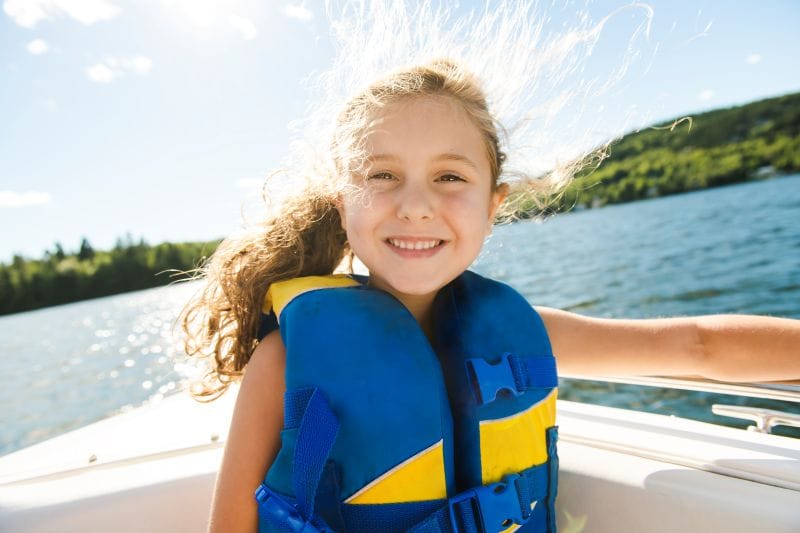The ABCs of Drowning Prevention
From pools, water parks, springs and miles of beaches, Florida offers an abundance of options for water play. With the hot summer months under way, that’s a boon – as long as it’s done safely. According to the Florida Department of Health, our state ranks fourth in the country for unintentional drowning-related deaths among children ages 1-17.
BayCare Kids Wellness and Safety Specialist Gina Baez helped us create a primer of the ABCs of water safety and drowning prevention, so you can enjoy the water in your home and when you’re out and about enjoying our beautiful state.
Alarms and chimes can alert you to a curious toddler opening the door and entering the pool area, so make sure to install them. Even if that repeated ding-ding sound drives you nuts, do not deactivate the alarm or chime.
Barriers of entry should be layered, so, in addition to alarms, install four-sided pool fencing, a pool cover, gates that self-latch and doors that self-lock. This way, even if one barrier fails or a child finds a way around it, other measures will also be in place.
CPR not only means the difference between life and death, but it can also dictate whether a child goes on to live a full and active life. If CPR is initiated right away, a child is three to five times more likely to survive a drowning incident with no long-term implications.
Delegate a water watcher when you are near any body of water in which children are playing. This person’s job is only to have eyes on the kids, not read, look at their phone or become distracted by an interesting conversation.
Empty pools of toys, noodles and anything that might tempt a child to reach in, leading to them falling in and downing. This includes small blow-up wading pools or any container that has water in it.
Floaties are NOT encouraged by health professionals. Floating armbands and tubes give children a false sense of security.
Grandparents, uncles, aunts and neighbors should also be aware of pool safety rules and barriers of safety, even if they don’t have small children in the home any more. Far too many drowning incidents occur when the children are in a different home.
Hot tubs, fish tanks, buckets and toilets are just four receptacles that you might not immediately think of as drowning dangers – but drowning can take place in just an inch of water. Lock toilets, empty buckets, open and clean fish tanks under supervision and employ the same levels of security around a hot tub as you would around a pool.
Initiate swim lessons as early as possible. Even 6-month-old infants can learn to roll over onto their backs and swim for the wall. Although swim lessons don’t automatically render your child drowning-proof, they are one of the best things you can do for lifelong protection around water.
Life Jackets save lives – wear a coastguard-approved personal flotation device (PFD) on any water craft, whether you are on a speedboat, paddleboard, canoe or kayak.
Lifeguard warnings and flags about dangerous waves and rip currents should be adhered to at all times. Especially if you are new to Florida or visiting, learn what a rip tide looks like and the best way to avoid drowning in one.
Most importantly: If a child is missing, IMMEDIATELY check your pool. Every second counts in a drowning incident. Check all bodies of water in and around your house before initiating any other search measures.
None of the above measures is enough on their own. To truly protect a child from drowning, the key is practice ALL of them and implement multiple layers of protection.
- For a free door alarm, email classes@baycare.org.
- BayCare Kids Wellness and Safety Specialists teach CPR and First Aid classes at the Children’s Board Family Resource Centers located throughout Hillsborough County. Visit https://www.familysupporthc.org/ for more information.
- BayCare Kids Splash into Summer Safety events are free to attend, although registration is required. The sessions teach water safety through interactive stations and include a snack and craft for children. Hillsborough County residents who are at least 6 months old can qualify for swim lesson vouchers. You must provide proof of eligibility to get a voucher.
*Presented by BayCare | iStock-1070509758 | Originally published in the June 2025 issue of Tampa Bay Parenting Magazine.


